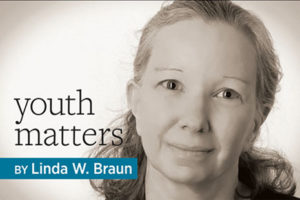
Academic libraries have long advocated for open educational resources (OERs)—openly licensed materials for learning and research—at colleges and universities. Pioneers like University of Massachusetts Amherst Libraries’ Open Education Initiative, Temple University Libraries’ Alternate Textbook Project, and the Scholarly Publishing and Academic Resources Coalition have been working for years to address the high cost of textbooks through open access models.
But with prices skyrocketing—the cost of textbooks has increased 73% since 2006, according to a 2016 report by the Student Public Interest Research Groups—some libraries and networks are using creative incentives to get OERs into the classroom.
Texas A&M University Libraries, in partnership with the school’s student government, has established what it believes to be the first student-nominated teaching awards for OERs in the US. The idea came out of the Southeastern Conference Academic Collaboration Workshop that Texas A&M hosted in 2015, and inaugural awards were distributed in May. Two separate awards were established—the Open Educator Award, which recognizes faculty members who use OERs in their courses, and the Open Education Champion Award, which recognizes faculty members who have created OERs—with the hope of increasing adoption rates.
“Getting a student-nominated award is actually prestigious here,” says Bruce Herbert, director of the Office of Scholarly Communications at Texas A&M University Libraries. Awards don’t come with a cash prize, but, Herbert says, “The award itself is valued for tenure and promotion far more than any award with money attached to it.”
While it is too soon to tell if this low-cost approach will boost adoptions, Herbert acknowledges staff buy-in is one of the biggest obstacles. “We all know how hard it is to get people to change their behavior,” he says.
University of Minnesota’s Open Textbook Network (OTN), a group that started in November 2014 and has grown to 38 higher education institutions and consortia representing 196 locations, addresses this matter in its programming. Membership benefits include a discussion list and data collection for stakeholders, but OTN is well-known for its on-campus workshops where faculty with OTN present to fellow professors on the textbook affordability crisis and OERs.
“We focus intensely on academic freedom,” says Sarah Cohen, OTN’s managing director. “We want faculty members to choose a book that meets the needs of their students and the needs of their course, and we suggest an open textbook may be a way to do that.”
At the end of the workshop, attendees are asked to write a review for an OER, and in turn receive a stipend provided by the member school. “We recommend $200,” says Cohen. “It’s up to the campus to decide how much they want to pay faculty, but the institution must cover the cost.”
We focus intensely on academic freedom. We want faculty members to choose a book that meets the needs of their students and the needs of their course, and we suggest an open textbook may be a way to do that. –Sarah Cohen, managing director of University of Minnesota’s Open Textbook Network
Cohen says that 43% of faculty members who have taken an OTN workshop and written a review have gone on to adopt OERs in their courses. In fall 2015, OTN reported that nine of its member institutions had saved students a total of $1.5 million as a result of OERs. “For high enrollment courses, it’s big money,” says Cohen.
LOUIS: The Louisiana Library Network, a consortium of 45 public and private college and university libraries, received $45,000 from the Louisiana Board of Regents in 2015 to fund proof-of-concept OER projects at its member institutions—allocating about $1,000 for each school—and also demonstrated impressive savings.
Directors and deans were invited to submit proposals identifying a way to use the money, such as adding to the library’s ebooks collection, creating an OER, replacing a commercial print textbook with an OER, or subscribing to an ebook vendor that allows rental of a specific book for a semester. Projects were implemented at 11 institutions, resulting in 1,410 students saving an estimated $137,640.
“This was a huge success in terms of the return on investment, the interest it has generated, and meeting the goal of saving the student money,” says Teri Gallaway, library consortium analyst for LOUIS. “At a minimum, we have started a dialogue with our sites about how changing library collection development policies can impact the narratives we use to demonstrate the value of an academic library.”
This summer, LOUIS will test a statewide ebook curriculum-driven acquisition program that would help individual libraries purchase low-cost ebooks, in time for fall course adoptions.
Cohen doesn’t see the push for OERs stopping anytime soon. “I really think it’s part of a national trend,” she says. “We’re seeing more presidents and provosts and leaders saying, ‘We need to address this issue.’”
She also says the real incentive is the collaboration cultivated within academic library communities. “Librarians are so committed to student success,” she says. “To try to figure this out for yourself is pretty difficult.”


